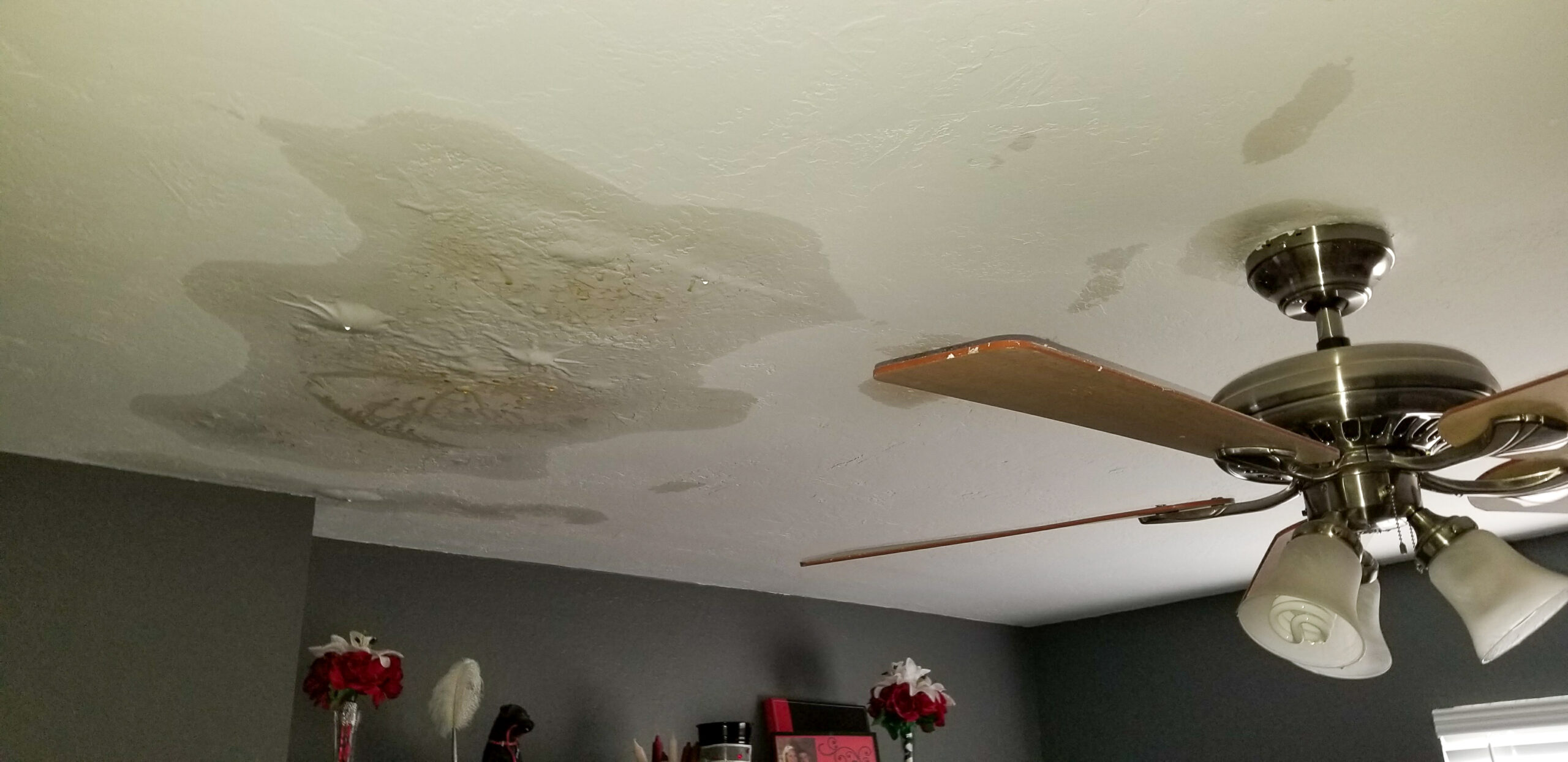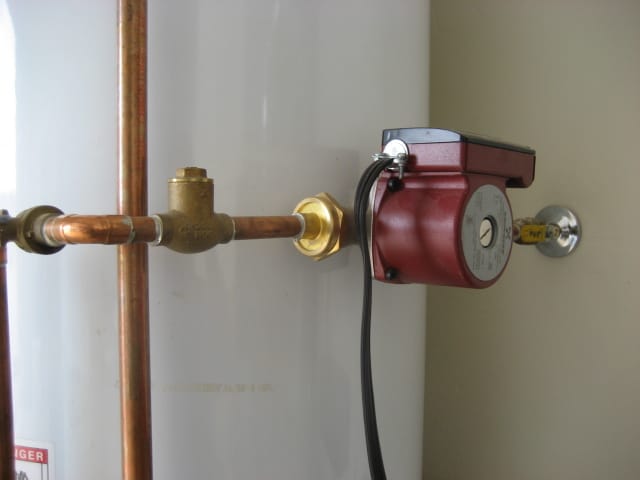Insider News – The Air We Breath door Air Quality
| Disclaimer Information provided in this booklet is based on scientific and technical understanding of the issues presented and is reflective of the jurisdictional boundaries established by the statutes governing the co-authoring agencies. Following the advice given will not necessarily provide complete protection in all situations or against all health hazards that may be caused by indoor air pollution. Indoor Air Quality Concerns All of us face a variety of risks to our health as we go about our day-to-day lives. Driving in cars, flying in planes, engaging in recreational activities, and being exposed to environmental pollutants all pose varying degrees of risk. Some risks are simply unavoidable. Some we choose to accept because to do otherwise would restrict our ability to lead our lives the way we want. And some are risks we might decide to avoid if we had the opportunity to make informed choices. Indoor air pollution is one risk that you can do something about. In the last several years, a growing body of scientific evidence has indicated that the air within homes and other buildings can be more seriously polluted than the outdoor air in even the largest and most industrialized cities. Other research indicates that people spend approximately 90 percent of their time indoors. Thus, for many people, the risks to health may be greater due to exposure to air pollution indoors than outdoors. In addition, people who may be exposed to indoor air pollutants for the longest periods of time are often those most susceptible to the effects of indoor air pollution. Such groups include the young, the elderly, and the chronically ill, especially those suffering from respiratory or cardiovascular disease. Why a Booklet on Indoor Air? While pollutant levels from individual sources may not pose a significant health risk by themselves, most homes have more than one source that contributes to indoor air pollution. There can be a serious risk from the cumulative effects of these sources. Fortunately, there are steps that most people can take both to reduce the risk from existing sources and to prevent new problems from occurring. This booklet was prepared by the U.S. Environmental Protection Agency (EPA) and the U.S. Consumer Product Safety Commission (CPSC) to help you decide whether to take actions that can reduce the level of indoor air pollution in your own home. Because so many Americans spend a lot of time in offices with mechanical heating, cooling, and ventilation systems, there is also a short section on the causes of poor air quality in offices and what you can do if you suspect that your office may have a problem. A glossary and a list of organizations where you can get additional information are available in this document. Indoor Air Quality in Your Home What Causes Indoor Air Problems? Indoor pollution sources that release gases or particles into the air are the primary cause of indoor air quality problems in homes. Inadequate ventilation can increase indoor pollutant levels by not bringing in enough outdoor air to dilute emissions from indoor sources and by not carrying indoor air pollutants out of the home. High temperature and humidity levels can also increase concentrations of some pollutants. Pollutant Sources There are many sources of indoor air pollution in any home. These include combustion sources such as oil, gas, kerosene, coal, wood, and tobacco products; building materials and furnishings as diverse as deteriorated, asbestos-containing insulation, wet or damp carpet, and cabinetry or furniture made of certain pressed wood products; products for household cleaning and maintenance, personal care, or hobbies; central heating and cooling systems and humidification devices; and outdoor sources such as radon, pesticides, and outdoor air pollution. The relative importance of any single source depends on how much of a given pollutant it emits and how hazardous those emissions are. In some cases, factors such as how old the source is and whether it is properly maintained are significant. For example, an improperly adjusted gas stove can emit significantly more carbon monoxide than one that is properly adjusted. Some sources, such as building materials, furnishings, and household products like air fresheners, release pollutants more or less continuously. Other sources, related to activities carried out in the home, release pollutants intermittently. These include smoking, the use of unvented or malfunctioning stoves, furnaces, or space heaters, the use of solvents in cleaning and hobby activities, the use of paint strippers in redecorating activities, and the use of cleaning products and pesticides in housekeeping. High pollutant concentrations can remain in the air for long periods after some of these activities. Amount of Ventilation If too little outdoor air enters a home, pollutants can accumulate to levels that can pose health and comfort problems. Unless they are built with special mechanical means of ventilation, homes that are designed and constructed to minimize the amount of outdoor air that can “leak” into and out of the home may have higher pollutant levels than other homes. However, because some weather conditions can drastically reduce the amount of outdoor air that enters a home, pollutants can build up even in homes that are normally considered “leaky.” How Does Outdoor Air Enter a House? Outdoor air enters and leaves a house by: infiltration, natural ventilation, and mechanical ventilation. In a process known as infiltration, outdoor air flows into the house through openings, joints, and cracks in walls, floors, and ceilings, and around windows and doors. In natural ventilation, air moves through opened windows and doors. Air movement associated with infiltration and natural ventilation is caused by air temperature differences between indoors and outdoors and by wind. Finally, there are a number of mechanical ventilation devices, from outdoor-vented fans that intermittently remove air from a single room, such as bathrooms and kitchen, to air handling systems that use fans and duct work to continuously remove indoor air and distribute filtered and conditioned outdoor air to strategic points throughout the house. The rate at which outdoor air replaces indoor air is described as the air exchange rate. When there is little infiltration, natural ventilation, or mechanical ventilation, the air exchange rate is low and pollutant levels can increase. What If You Live in an Apartment? Apartments can have the same indoor air problems as single-family homes because many of the pollution sources, such as the interior building materials, furnishings, and household products, are similar. Indoor air problems similar to those in offices are caused by such sources as contaminated ventilation systems, improperly placed outdoor air intakes, or maintenance activities. Solutions to air quality problems in apartments, as in homes and offices, involve such actions as: eliminating or controlling the sources of pollution, increasing ventilation, and installing air cleaning devices. Often a resident can take the appropriate action to improve the indoor air quality by removing a source, altering an activity, unblocking an air supply vent, or opening a window to temporarily increase the ventilation; in other cases, however, only the building owner or manager is in a position to remedy the problem. (See the section “What to Do If You Suspect a Problem“) You can encourage building management to follow guidance in EPA’s IAQ Building Education and Assessment Model (I-BEAM). I-BEAM updates and expands EPA’s existing Building Air Quality guidance and is designed to be comprehensive state-of-the-art guidance for managing IAQ in commercial buildings. This guidance was designed to be used by building professionals and others interested in indoor air quality in commercial buildings. I-BEAM contains text, animation/visual, and interactive/calculation components that can be used to perform a number of diverse tasks. You can also encourage building management to follow guidance in EPA and NIOSH’s Building Air Quality: A Guide for Building Owners and Facility Managers (The BAQ is available as PDF files which can be downloaded and viewed individually or as a single file with all of the PDF files). Improving the Air Quality in Your Home Indoor Air and Your Health Health effects from indoor air pollutants may be experienced soon after exposure or, possibly, years later. Immediate effects may show up after a single exposure or repeated exposures. These include irritation of the eyes, nose, and throat, headaches, dizziness, and fatigue. Such immediate effects are usually short-term and treatable. Sometimes the treatment is simply eliminating the person’s exposure to the source of the pollution, if it can be identified. Symptoms of some diseases, including asthma, hypersensitivity pneumonitis, and humidifier fever, may also show up soon after exposure to some indoor air pollutants. The likelihood of immediate reactions to indoor air pollutants depends on several factors. Age and preexisting medical conditions are two important influences. In other cases, whether a person reacts to a pollutant depends on individual sensitivity, which varies tremendously from person to person. Some people can become sensitized to biological pollutants after repeated exposures, and it appears that some people can become sensitized to chemical pollutants as well. Certain immediate effects are similar to those from colds or other viral diseases, so it is often difficult to determine if the symptoms are a result of exposure to indoor air pollution. For this reason, it is important to pay attention to the time and place the symptoms occur. If the symptoms fade or go away when a person is away from the home and return when the person returns, an effort should be made to identify indoor air sources that may be possible causes. Some effects may be made worse by an inadequate supply of outdoor air or from the heating, cooling, or humidity conditions prevalent in the home. Other health effects may show up either years after exposure has occurred or only after long or repeated periods of exposure. These effects, which include some respiratory diseases, heart disease, and cancer, can be severely debilitating or fatal. It is prudent to try to improve the indoor air quality in your home even if symptoms are not noticeable. More information on potential health effects from particular indoor air pollutants is provided in the section, “A Look at Source-Specific Controls.” While pollutants commonly found in indoor air are responsible for many harmful effects, there is considerable uncertainty about what concentrations or periods of exposure are necessary to produce specific health problems. People also react very differently to exposure to indoor air pollutants. Further research is needed to better understand which health effects occur after exposure to the average pollutant concentrations found in homes and which occur from the higher concentrations that occur for short periods of time. The health effects associated with some indoor air pollutants are summarized in the section “Reference Guide to Major Indoor Air Pollutants in the Home.” Identifying Air Quality Problems Some health effects can be useful indicators of an indoor air quality problem, especially if they appear after a person moves to a new residence, remodels or refurnishes a home, or treats a home with pesticides. If you think that you have symptoms that may be related to your home environment, discuss them with your doctor or your local health department to see if they could be caused by indoor air pollution. You may also want to consult a board-certified allergist or an occupational medicine specialist for answers to your questions. Another way to judge whether your home has or could develop indoor air problems is to identify potential sources of indoor air pollution. Although the presence of such sources does not necessarily mean that you have an indoor air quality problem, being aware of the type and number of potential sources is an important step toward assessing the air quality in your home. A third way to decide whether your home may have poor indoor air quality is to look at your lifestyle and activities. Human activities can be significant sources of indoor air pollution. Finally, look for signs of problems with the ventilation in your home. Signs that can indicate your home may not have enough ventilation include moisture condensation on windows or walls, smelly or stuffy air, dirty central heating and air cooling equipment, and areas where books, shoes, or other items become moldy (see www.epa.gov/mold). To detect odors in your home, step outside for a few minutes, and then upon reentering your home, note whether odors are noticeable. Measuring Pollutant Levels The federal government recommends that you measure the level of radon in your home. Without measurements there is no way to tell whether radon is present because it is a colorless, odorless, radioactive gas. Inexpensive devices are available for measuring radon. EPA provides guidance as to risks associated with different levels of exposure and when the public should consider corrective action. There are specific mitigation techniques that have proven effective in reducing levels of radon in the home. (See “Radon” for additional information about testing and controlling radon in homes.) For pollutants other than radon, measurements are most appropriate when there are either health symptoms or signs of poor ventilation and specific sources or pollutants have been identified as possible causes of indoor air quality problems. Testing for many pollutants can be expensive. Before monitoring your home for pollutants besides radon, consult your state or local health department or professionals who have experience in solving indoor air quality problems in non-industrial buildings. Weatherizing Your Home The federal government recommends that homes be weatherized in order to reduce the amount of energy needed for heating and cooling. While weatherization is underway, however, steps should also be taken to minimize pollution from sources inside the home. (See “Improving the Air Quality in Your Home” for recommended actions.) In addition, residents should be alert to the emergence of signs of inadequate ventilation, such as stuffy air, moisture condensation on cold surfaces, or mold and mildew growth (see www.epa.gov/mold). Additional weatherization measures should not be undertaken until these problems have been corrected. Weatherization generally does not cause indoor air problems by adding new pollutants to the air. (There are a few exceptions, such as caulking, that can sometimes emit pollutants.) However, measures such as installing storm windows, weather stripping, caulking, and blown-in wall insulation can reduce the amount of outdoor air infiltrating into a home. Consequently, after weatherization, concentrations of indoor air pollutants from sources inside the home can increase. Three Basic Strategies Source Control Usually the most effective way to improve indoor air quality is to eliminate individual sources of pollution or to reduce their emissions. Some sources, like those that contain asbestos, can be sealed or enclosed; others, like gas stoves, can be adjusted to decrease the amount of emissions. In many cases, source control is also a more cost-efficient approach to protecting indoor air quality than increasing ventilation because increasing ventilation can increase energy costs. Specific sources of indoor air pollution in your home are listed later in this section. Ventilation Improvements Another approach to lowering the concentrations of indoor air pollutants in your home is to increase the amount of outdoor air coming indoors. Most home heating and cooling systems, including forced air heating systems, do not mechanically bring fresh air into the house. Opening windows and doors, operating window or attic fans, when the weather permits, or running a window air conditioner with the vent control open increases the outdoor ventilation rate. Local bathroom or kitchen fans that exhaust outdoors remove contaminants directly from the room where the fan is located and also increase the outdoor air ventilation rate. It is particularly important to take as many of these steps as possible while you are involved in short-term activities that can generate high levels of pollutants–for example, painting, paint stripping, heating with kerosene heaters, cooking, or engaging in maintenance and hobby activities such as welding, soldering, or sanding. You might also choose to do some of these activities outdoors, if you can and if weather permits. Advanced designs of new homes are starting to feature mechanical systems that bring outdoor air into the home. Some of these designs include energy-efficient heat recovery ventilators (also known as air-to-air heat exchangers). For more information about air-to-air heat exchangers, contact the U.S. Department of Energy’s Energy Efficiency and Renewable Energy’s Office (EERE) at www.eere.energy.gov/. You may contact the EERE Information Center with questions on EERE’s products, services, and 11 technology programs by calling 1-877-EERE-INF (1-877-337-3463). Air Cleaners There are many types and sizes of air cleaners on the market, ranging from relatively inexpensive table-top models to sophisticated and expensive whole-house systems. Some air cleaners are highly effective at particle removal, while others, including most table-top models, are much less so. Air cleaners are generally not designed to remove gaseous pollutants. The effectiveness of an air cleaner depends on how well it collects pollutants from indoor air (expressed as a percentage efficiency rate) and how much air it draws through the cleaning or filtering element (expressed in cubic feet per minute). A very efficient collector with a low air-circulation rate will not be effective, nor will a cleaner with a high air-circulation rate but a less efficient collector. The long-term performance of any air cleaner depends on maintaining it according to the manufacturer’s directions. Another important factor in determining the effectiveness of an air cleaner is the strength of the pollutant source. Table-top air cleaners, in particular, may not remove satisfactory amounts of pollutants from strong nearby sources. People with a sensitivity to particular sources may find that air cleaners are helpful only in conjunction with concerted efforts to remove the source. Over the past few years, there has been some publicity suggesting that houseplants have been shown to reduce levels of some chemicals in laboratory experiments. There is currently no evidence, however, that a reasonable number of houseplants remove significant quantities of pollutants in homes and offices. Indoor houseplants should not be over-watered because overly damp soil may promote the growth of microorganisms which can affect allergic individuals. At present, EPA does not recommend using air cleaners to reduce levels of radon and its decay products. The effectiveness of these devices is uncertain because they only partially remove the radon decay products and do not diminish the amount of radon entering the home. EPA plans to do additional research on whether air cleaners are, or could become, a reliable means of reducing the health risk from radon. EPA’s booklet, Residential Air-Cleaning Devices, provides further information on air-cleaning devices to reduce indoor air pollutants. For most indoor air quality problems in the home, source control is the most effective solution. This section takes a source-by-source look at the most common indoor air pollutants, their potential health effects, and ways to reduce levels in the home. (For a summary of the points made in this section, see the section entitled “Reference Guide to Major Indoor Air Pollutants in the Home“). Ozone Generators That Are Sold As Air Cleaners (which is only available via this web site) was prepared by EPA to provide accurate information regarding the use of ozone-generating devices in indoor occupied spaces. This information is based on the most credible scientific evidence currently available. “Should You Have the Air Ducts in Your Home Cleaned?” was prepared by EPA to assist consumers in answering this often confusing question. The document explains what air duct cleaning is, provides guidance to help consumers decide whether to have the service performed in their home, and provides helpful information for choosing a duct cleaner, determining if duct cleaning was done properly, and how to prevent contamination of air ducts. A Look at Source-Specific Controls Radon (Rn) The most common source of indoor radon is uranium in the soil or rock on which homes are built. As uranium naturally breaks down, it releases radon gas which is a colorless, odorless, radioactive gas. Radon gas enters homes through dirt floors, cracks in concrete walls and floors, floor drains, and sumps. When radon becomes trapped in buildings and concentrations build up indoors, exposure to radon becomes a concern. Any home may have a radon problem. This means new and old homes, well-sealed and drafty homes, and homes with or without basements. Sometimes radon enters the home through well water. In a small number of homes, the building materials can give off radon, too. However, building materials rarely cause radon problems by themselves. Health Effects of Radon The predominant health effect associated with exposure to elevated levels of radon is lung cancer. Research suggests that swallowing water with high radon levels may pose risks, too, although these are believed to be much lower than those from breathing air containing radon. Major health organizations (like the Centers for Disease Control and Prevention, the American Lung Association (ALA), and the American Medical Association) agree with estimates that radon causes thousands of preventable lung cancer deaths each year. EPA estimates that radon causes about 14,000 deaths per year in the United States–however, this number could range from 7,000 to 30,000 deaths per year. If you smoke and your home has high radon levels, your risk of lung cancer is especially high. Read more about Radon health risks… Reducing Exposure to Radon in Homes Measure levels of radon in your home. You can’t see radon, but it’s not hard to find out if you have a radon problem in your home. Testing is easy and should only take a little of your time. There are many kinds of inexpensive, do-it-yourself radon test kits you can get through the mail and in hardware stores and other retail outlets. EPA recommends that consumers use test kits that are state-certified or have met the requirements of some national radon proficiency program. If you prefer, or if you are buying or selling a home, you can hire a trained contractor to do the testing for you (see www.epa.gov/radon/radontest.html). You should call your state radon office to obtain a list of qualified contractors in your area. You can also contact either the National Environmental Health Association’s (NEHA) National Radon Proficiency Program (NRPP) www.neha-nrpp.org or the National Radon Safety Board (NRSB) – www.nrsb.org for a list of proficient radon measurement and/or mitigation contractors. Refer to the EPA guidelines on how to test and interpret your test results. You can learn more about radon through EPA’s publications, for example: A Citizen’s Guide to Radon: The Guide to Protecting Yourself and Your Family From Radon, and Home Buyer’s and Seller’s Guide to Radon Learn about radon reduction methods. Ways to reduce radon in your home are discussed in EPA’s Consumer’s Guide to Radon Reduction. There are simple solutions to radon problems in homes. Thousands of homeowners have already fixed radon problems. Lowering high radon levels requires technical knowledge and special skills. You should use a contractor who is trained to fix radon problems. A trained radon reduction contractor can study the problem in your home and help you pick the correct treatment method. Check with your state radon office for names of qualified or state-certified radon-reduction contractors in your area. Stop smoking and discourage smoking in your home. Scientific evidence indicates that smoking combined with radon is an especially serious health risk. Stop smoking and lower your radon level to reduce lung cancer risk. Treat radon-contaminated well water. While radon in water is not a problem in homes served by most public water supplies, it has been found in well water. If you’ve tested the air in your home and found a radon problem, and you have a well, contact a lab certified to measure radiation in water to have your water tested. Radon problems in water can be readily fixed. Call your state radon office or the EPA Drinking Water Hotline (800-426-4791) for more information. Environmental Tobacco Smoke (ETS) Environmental tobacco smoke (ETS) is the mixture of smoke that comes from the burning end of a cigarette, pipe, or cigar, and smoke exhaled by the smoker. It is a complex mixture of over 4,000 compounds, more than 40 of which are known to cause cancer in humans or animals and many of which are strong irritants. ETS is often referred to as “secondhand smoke” and exposure to ETS is often called “passive smoking.” Health Effects of Environmental Tobacco Smoke In 1992, EPA completed a major assessment of the respiratory health risks of ETS (Respiratory Health Effects of Passive Smoking: Lung Cancer and Other Disorders EPA/600/6-90/006F). The report concludes that exposure to ETS is responsible for approximately 3,000 lung cancer deaths each year in nonsmoking adults and impairs the respiratory health of hundreds of thousands of children. Infants and young children whose parents smoke in their presence are at increased risk of lower respiratory tract infections (pneumonia and bronchitis) and are more likely to have symptoms of respiratory irritation like cough, excess phlegm, and wheeze. EPA estimates that passive smoking annually causes between 150,000 and 300,000 lower respiratory tract infections in infants and children under 18 months of age, resulting in between 7,500 and 15,000 hospitalizations each year. These children may also have a build-up of fluid in the middle ear, which can lead to ear infections. Older children who have been exposed to secondhand smoke may have slightly reduced lung function. Asthmatic children are especially at risk. EPA estimates that exposure to secondhand smoke increases the number of episodes and severity of symptoms in hundreds of thousands of asthmatic children, and may cause thousands of non-asthmatic children to develop the disease each year. EPA estimates that between 200,000 and 1,000,000 asthmatic children have their condition made worse by exposure to secondhand smoke each year. Exposure to secondhand smoke causes eye, nose, and throat irritation. It may affect the cardiovascular system and some studies have linked exposure to secondhand smoke with the onset of chest pain. For publications about ETS, go to Smoke Free Homes web site, the IAQ Publications page. Reducing Exposure to Environmental Tobacco Smoke Don’t smoke at home or permit others to do so. Ask smokers to smoke outdoors. The 1986 Surgeon General’s report concluded that physical separation of smokers and nonsmokers in a common air space, such as different rooms within the same house, may reduce – but will not eliminate – non-smokers’ exposure to environmental tobacco smoke. If smoking indoors cannot be avoided, increase ventilation in the area where smoking takes place. Open windows or use exhaust fans. Ventilation, a common method of reducing exposure to indoor air pollutants, also will reduce but not eliminate exposure to environmental tobacco smoke. Because smoking produces such large amounts of pollutants, natural or mechanical ventilation techniques do not remove them from the air in your home as quickly as they build up. In addition, the large increases in ventilation it takes to significantly reduce exposure to environmental tobacco smoke can also increase energy costs substantially. Consequently, the most effective way to reduce exposure to environmental tobacco smoke in the home is to eliminate smoking there. Do not smoke if children are present, particularly infants and toddlers. Children are particularly susceptible to the effects of passive smoking. Do not allow baby-sitters or others who work in your home to smoke indoors. Discourage others from smoking around children. Find out about the smoking policies of the day care center providers, schools, and other care givers for your children. The policy should protect children from exposure to ETS. Biological Contaminants Biological contaminants include bacteria, molds, mildew, viruses, animal dander and cat saliva, house dust mites, cockroaches, and pollen. There are many sources of these pollutants. Pollens originate from plants; viruses are transmitted by people and animals; bacteria are carried by people, animals, and soil and plant debris; and household pets are sources of saliva and animal dander. The protein in urine from rats and mice is a potent allergen. When it dries, it can become airborne. Contaminated central air handling systems can become breeding grounds for mold, mildew, and other sources of biological contaminants and can then distribute these contaminants through the home. (See www.epa.gov/mold) By controlling the relative humidity level in a home, the growth of some sources of biologicals can be minimized. A relative humidity of 30-50 percent is generally recommended for homes. Standing water, water-damaged materials, or wet surfaces also serve as a breeding ground for molds, mildews, bacteria, and insects. House dust mites, the source of one of the most powerful biological allergens, grow in damp, warm environments. Health Effects From Biological Contaminants Some biological contaminants trigger allergic reactions, including hypersensitivity pneumonitis, allergic rhinitis, and some types of asthma. Infectious illnesses, such as influenza, measles, and chicken pox are transmitted through the air. Molds and mildews release disease-causing toxins. Symptoms of health problems caused by biological pollutants include sneezing, watery eyes, coughing, shortness of breath, dizziness, lethargy, fever, and digestive problems. Allergic reactions occur only after repeated exposure to a specific biological allergen. However, that reaction may occur immediately upon re-exposure or after multiple exposures over time. As a result, people who have noticed only mild allergic reactions, or no reactions at all, may suddenly find themselves very sensitive to particular allergens. Some diseases, like humidifier fever, are associated with exposure to toxins from microorganisms that can grow in large building ventilation systems. However, these diseases can also be traced to microorganisms that grow in home heating and cooling systems and humidifiers. Children, elderly people, and people with breathing problems, allergies, and lung diseases are particularly susceptible to disease-causing biological agents in the indoor air. Reducing Exposure to Biological Contaminants Install and use exhaust fans that are vented to the outdoors in kitchens and bathrooms and vent clothes dryers outdoors. These actions can eliminate much of the moisture that builds up from everyday activities. There are exhaust fans on the market that produce little noise, an important consideration for some people. Another benefit to using kitchen and bathroom exhaust fans is that they can reduce levels of organic pollutants that vaporize from hot water used in showers and di |











Related Posts